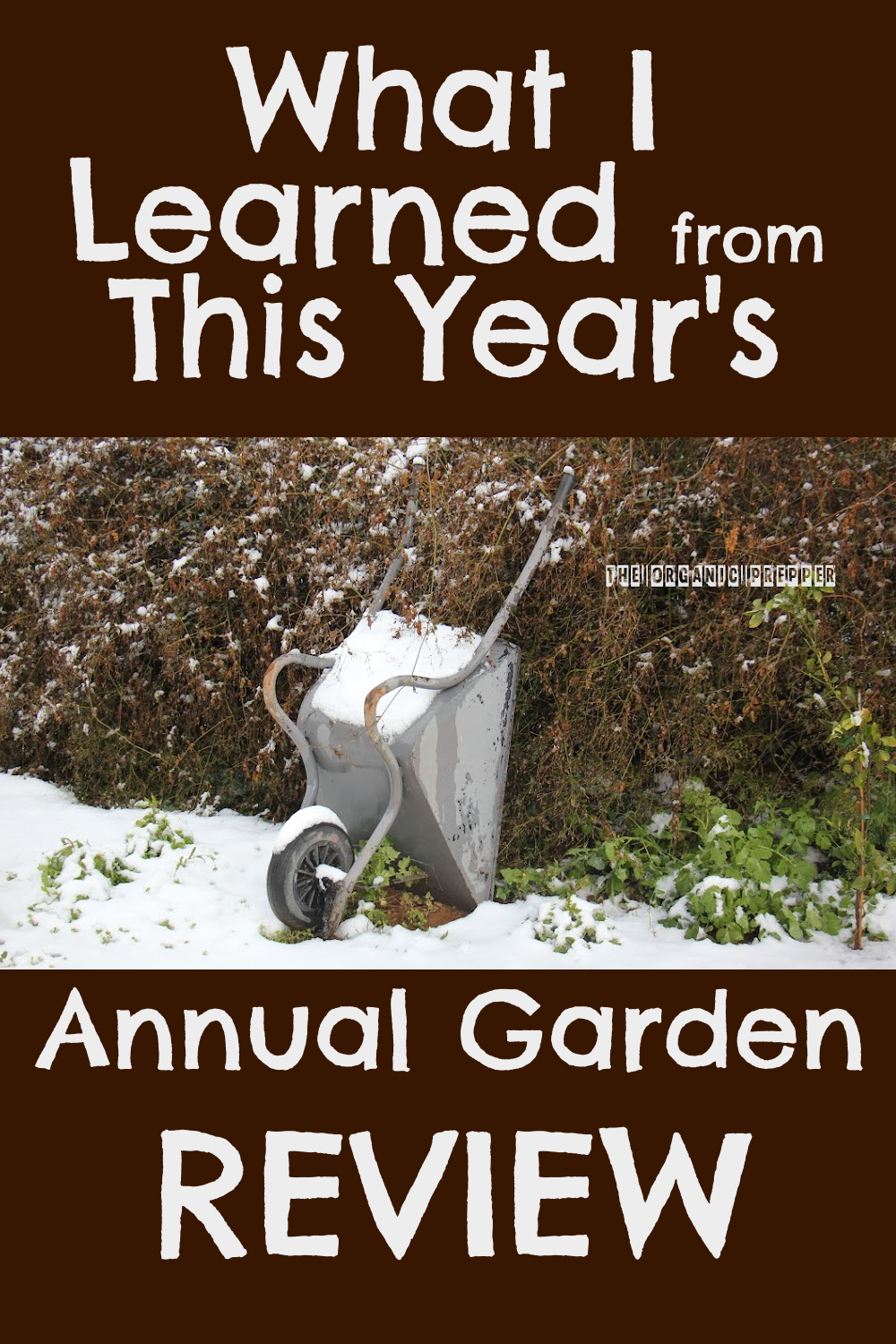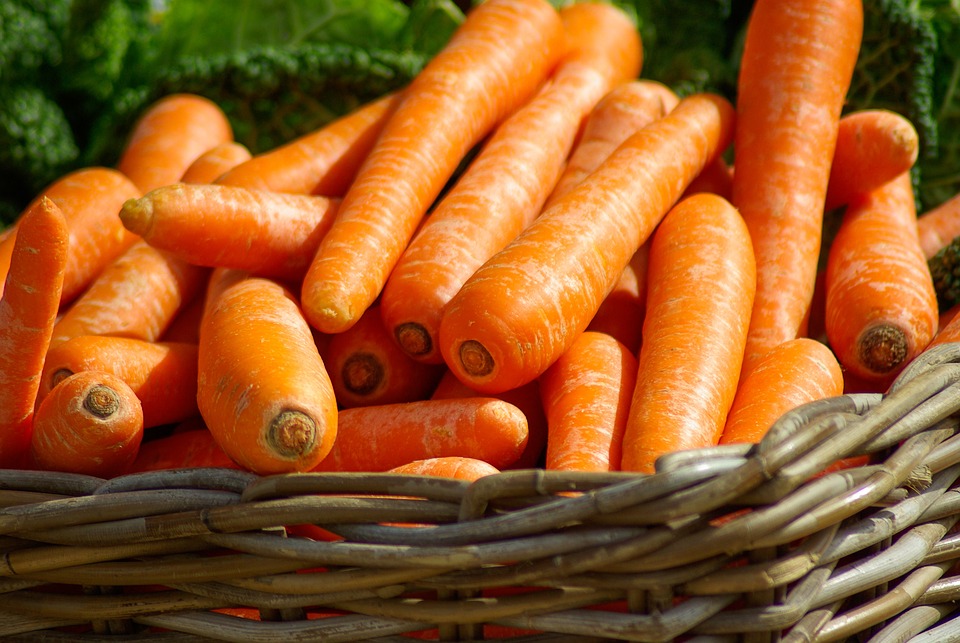[ad_1]
(Psst: The FTC wants me to remind you that this website contains affiliate links. That means if you make a purchase from a link you click on, I might receive a small commission. This does not increase the price you’ll pay for that item nor does it decrease the awesomeness of the item. ~ Daisy)
So you’ve taken our Home Agriculture Comprehensive course, and you’ve done well, growing some of your own food. In these days of inflation and shortages, this is a viable option that many are taking advantage of. As I see it, anything I put in my mouth that I grew myself is a plus!
Granted, food from the garden isn’t free, but the benefits more than make up for the work. But where do we go from here? Now that the garden is done, what can we do to improve it?
I like to do an annual review of my garden. I document what I did right, what didn’t work, and what I plan to do differently next year. In this article, I’ll show my review so you can learn how to do yours. I had three areas in production this year, so I’ll take them one at a time, but the three questions are always the same.
Overall, I count my first year at the community garden plot as a success.
Things I did right at the community garden plot:
–Laying down the weed barrier cloth. That saved so much time & effort on the care and maintenance front!
–Vegetable selection. Stuff grew well, and I only had two-legged varmints once!
–Overall care & maintenance. Getting up at 6 am didn’t kill me, and I had a good harvest. Exercise and fresh air are priceless, plus they put a really positive spin on my day.
–That old bucket & milk jug for watering worked very well and didn’t cost me a dime.
–Adding mycorrhiza at planting seemed to work very well. I used these granules.
-The soil test from Soil Savvy was also an excellent investment. The cost was comparable to my local extension office offering, and the test was much more comprehensive.
Things I could improve upon/will do differently next year at the community garden plot:
–Vegetable selection. Twenty squashes and ten bell peppers were simply too many. Keeping in mind my seed-starting fiasco and the fact that I had to take what I could get from the garden center, I did OK, but I could improve in this area. I was able to find some of my old, tried & true seed starting mix, so I will use that next year. The stuff that included mycorrhiza was obviously unsterilized and produced seedlings that were runted and diseased.
–Snow fence. Most of the others didn’t use fencing, perhaps for good reason. It was a pain to pull, and critters still got in.
–Cucumbers. Both the powdery mildew and the two-legged varmints liked those, and I got very few. So nix those. I like zucchini pickles better, anyway.
How did I do with my yard and deck gardens?
Things I did right:
–Moving the pepper plants away from the tomatoes. I don’t care what the companion planting charts say. When I grew them together, my peppers were always thin and spindly, and I was lucky if I got two per plant. By moving them, the peppers produced heavily.
–Tomatillos. This was a chance purchase and my first year growing them. They produced wonderfully! That’s a keeper for next year’s garden. I saved seeds but couldn’t resist buying a few more.
–I cleaned out one of my strawberry beds. The Alpine White Soul just never returned well for the work it was. It was easily choked out by weeds, the berries were tiny, and never enough at once to even enjoy a bowl full. As I was cleaning out the new bed, I found myself accumulating a decent pile of rooted & viable runners. So here I sit, with a nice pile of viable plants, thinking that success is often the recognition & proper exploitation of opportunity. So I made use of my opportunity, and we’ll see! As a bonus, I have room to plant some of my garlic bulbs there.
–Growing carrots in the spaces made by those cinder block bricks worked very well. I’d made a new bed from bricks I had from an old project, so they didn’t cost me anything. The new space was most helpful. Radishes also grew well in those spaces. I think the beets would have been happier if the rabbits had left them alone. Oh well.
(What do you do with all this food? Check out our free QUICKSTART Guide to home canning.)
Things I could improve upon with my yard and deck gardens:
I purchased new garden soil since I couldn’t find my usual potting soil for any price I was willing to pay. This worked well in the garden, but was simply too heavy for the containers, and thus, the deck containers were largely a wash this year. It was full of weed seeds too.
I didn’t get anything from the deck other than one pot of wine cap mushrooms, in fact. Although the potatoes doubled (I got two pounds for one pound of seed), they’ve grown much better in these pots. Also, the varieties I chose rotted while being cured and rotted while being stored. Therefore, essentially I didn’t get anything.
I worked very hard for nothing, and that isn’t acceptable. The few greens, herbs, and beans I got from the other pots were much less than in previous years, and I believe the soil was the problem. It was just too heavy. If I can’t find potting soil at a decent price, I doubt I’ll even set up the deck next year. In fact, one of my tomato plants in the raised died so quickly that I suspect early blight, and this might have come with the soil. None of my tomatoes produced well this year, though the tomatillos and squashes in that bed produced well. The problem might have come from the nursery plant as well.
(Want uninterrupted access to The Organic Prepper? Check out our paid-subscription newsletter.)
Here are the things I can do differently in all areas:
As I said above, if I can’t get decent potting soil to mix with the garden soil, I won’t even set the deck up next year. I can use that space for flowers, supporting the high school botany club, and good for the pollinators. I do have several pots overwintering in the house that will go out there but forget hauling the VegTrug and all of that soil for such a lousy return! And definitely no Adirondack Blue or Magic Molly potatoes. Bah! My Elfes and Red Norlands produce well, and I’ve saved seed for the past few years. The Red Adirondacks weren’t bad, either. Saved seed is free since seed potato online is also outrageously priced.
Now that I have a better feel of how much I can fit in my plot, I can start my veggies accordingly. I also observed what my neighbors did. I can move tomatoes over there, try corn, and grow my beans and peas there. I’ll definitely cut back on the squashes, even though I am sitting on a nice pile of winter varieties that I feel grateful to have.
The food bank was also grateful for the 210 pounds I donated, and helping gives me a good feeling in my heart and a good way to express my gratitude for all that I have. But I can do well with less than ten plants. I’ll skip the golden and buttercup varieties since they didn’t produce well and stick with zucchini, butternut, spaghetti, and perhaps a patty pan. I can also produce what I need from 3-4 pepper plants. No need for 10.
I did set up a wine cap mushroom bed outside since those grew well in a pot on my deck. That’s a “we’ll see” thing. I harvested a few lion’s mane fruits from the experimental inoculation I did last year. They were very small but each enough for one meal. So I have hope for the wine caps.
I have garlic planted in the brick spaces now. Since seed garlic was outrageously expensive this year, I used what I had from previous years. Between there and the strawberry bed, I’ve made a good-sized planting, more than 30 cloves. What I get remains to be seen.
Do you do an end-of-year review of your garden?
Do you keep a gardening journal? How about a year-end review? What worked well for you, and what can you improve upon over this past year? Tell us in the comments below!
About Amy Allen
Amy Allen is a professional bookworm and student of Life, the Universe, and Everything. She’s also a Master Gardener with a BS in biology, and has been growing food on her small urban lot since 2010.

[ad_2]
Source link



